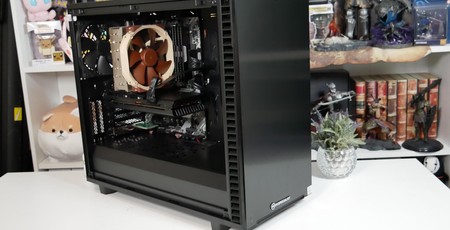PCSpecialist Myrmidon III PC Review
September 2, 2020 | 12:21
Companies: #amd #asus #corsair #fractal-design #intel #noctua #pc-specialist #seagate

As this is the first system on the new suite and this is the first review, we only have the results in isolation; others will be added in due course.
Cinebench R20
We use Cinebench R20 to test CPU performance and see how it handles multi-core and single core rendering. The multi-core score tells us how fast the CPU is in multi-processing tasks that utilize all of the available cores such as; encoding and rendering. Where as the single core score tells us how fast the CPU is when only one single core is utilized for software and overall work performance. Here are the results of the Intel Core i9-10900, 10-core, 20-thread processor:


Blender
Blender again is another rendering benchmark software that tests CPU performance. However, it also tests the GPU too. This runs the benchmark and gives you the total time it takes. So lower the time taken to complete the benchmark, the better. Here are the results of the Intel Core i9-10900, 10-core, 20-thread and the AMD Radeon RX 5700 XT graphics card:


PCMark 10
Next is PCMark 10. This runs a set of tests that cover the wide variety of task performed in a realistic workplace situation. From your essentials which include web browsing, video calls and app start up to productivity for spreadsheets, writing and digital content creation for rendering, photo and video editing. Here are the results:

CrystalDiskMark
To check the read and write speeds of the storage we use CrystalDiskMark. It measures the speeds for sequential and random performance in MB/s. Here are the results:


Random:


PCS should be using an entry level PCIe 3.0 drive that would score around 3x what the SATA-based one does.

MSI MPG Velox 100R Chassis Review
October 14 2021 | 15:04





Want to comment? Please log in.